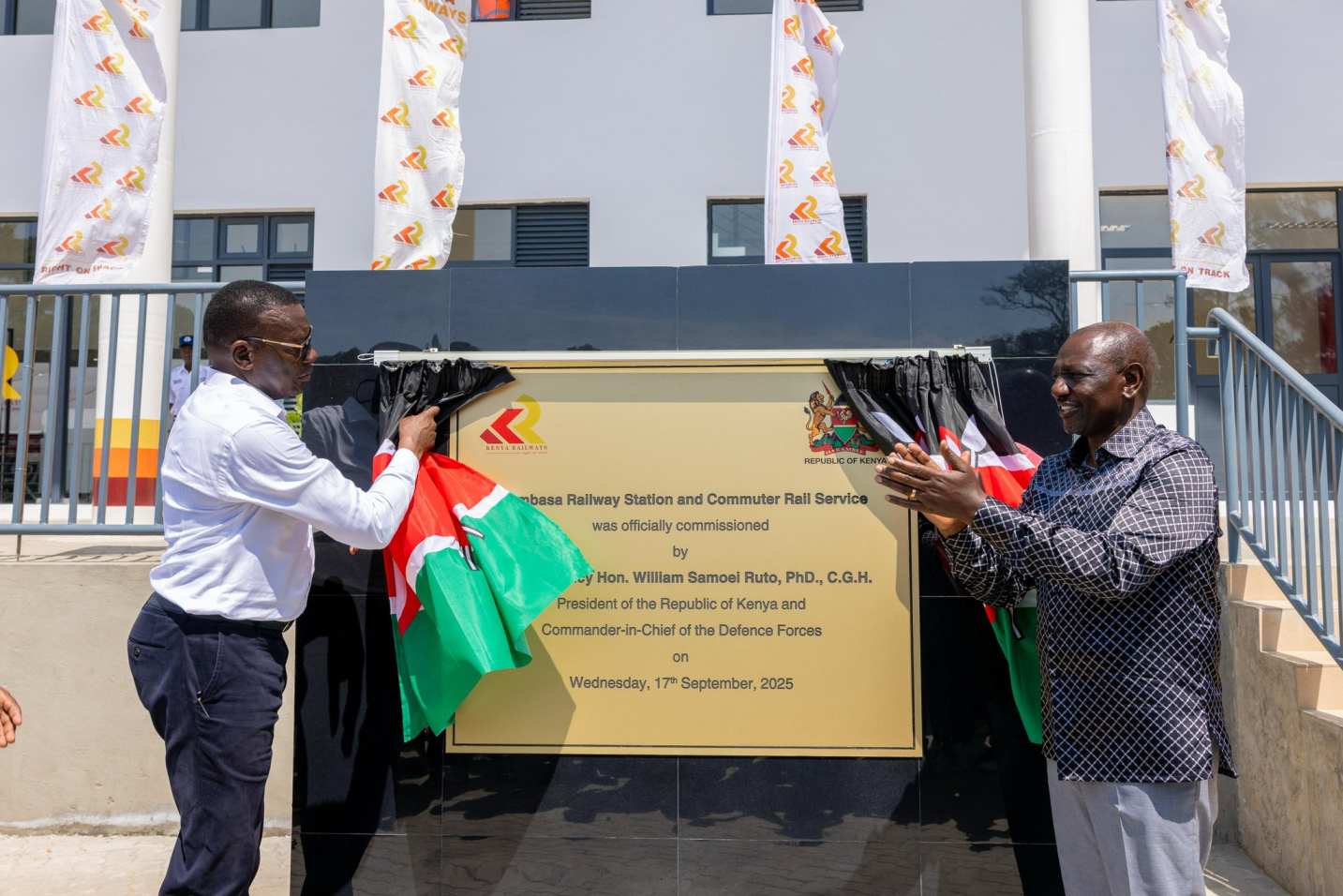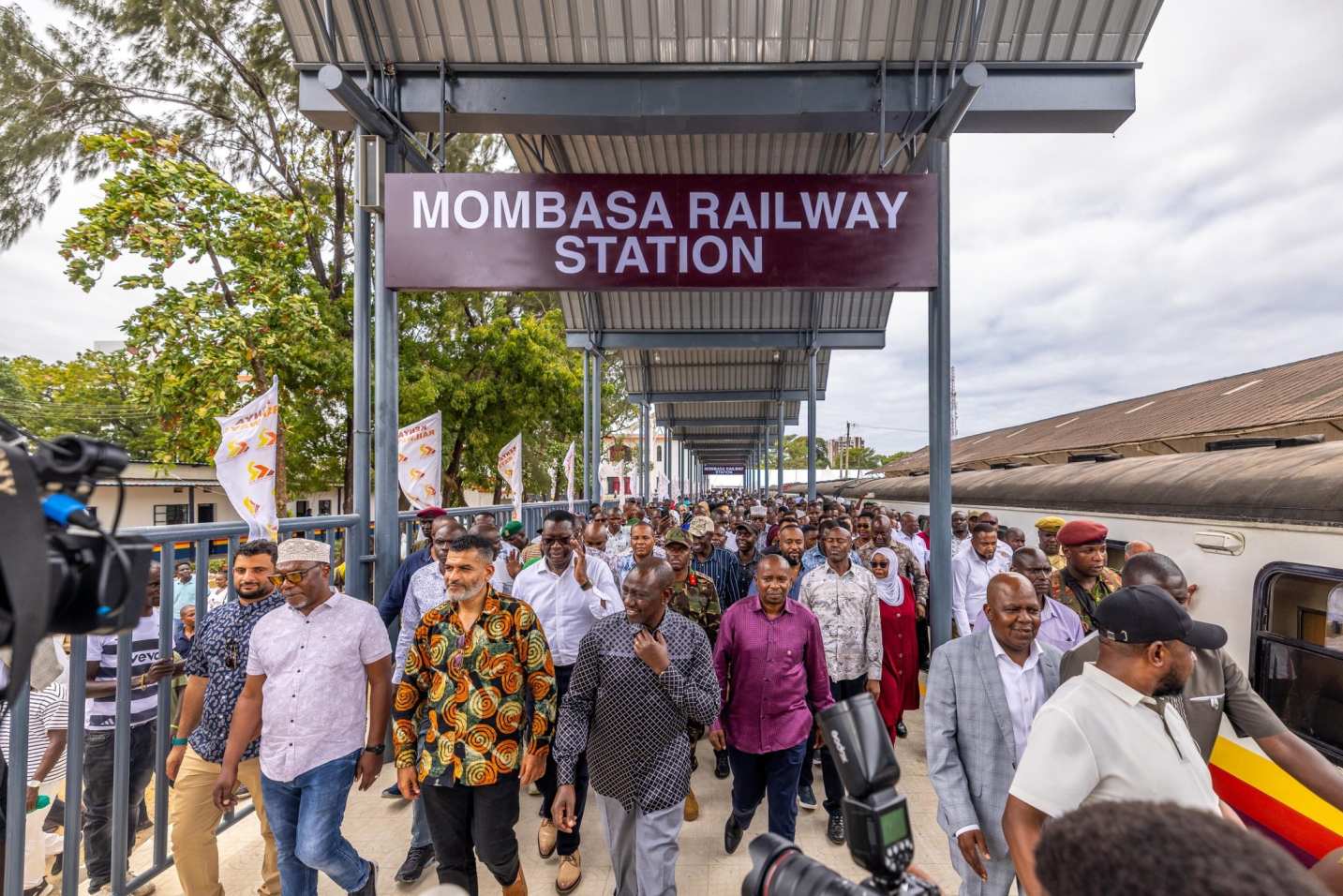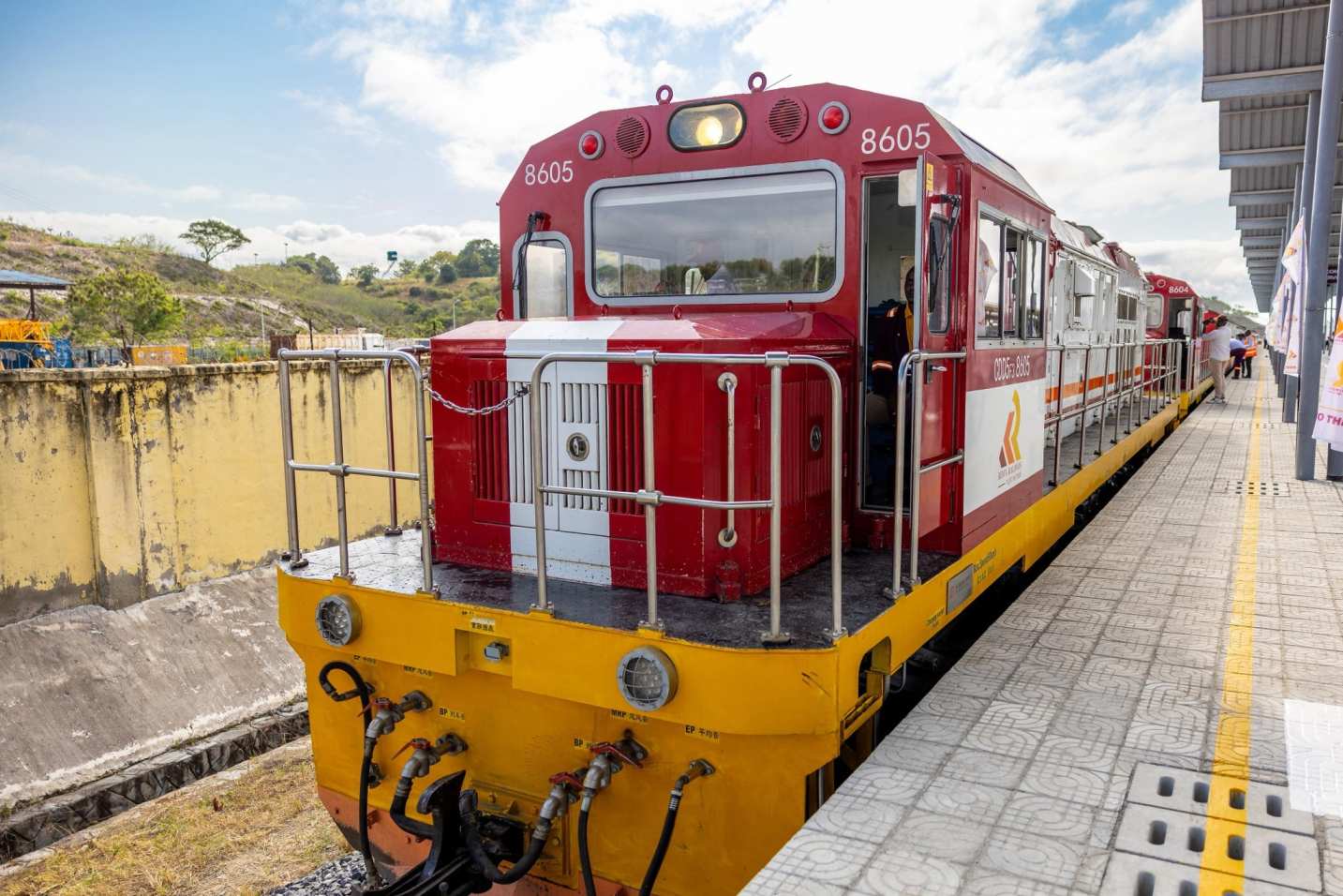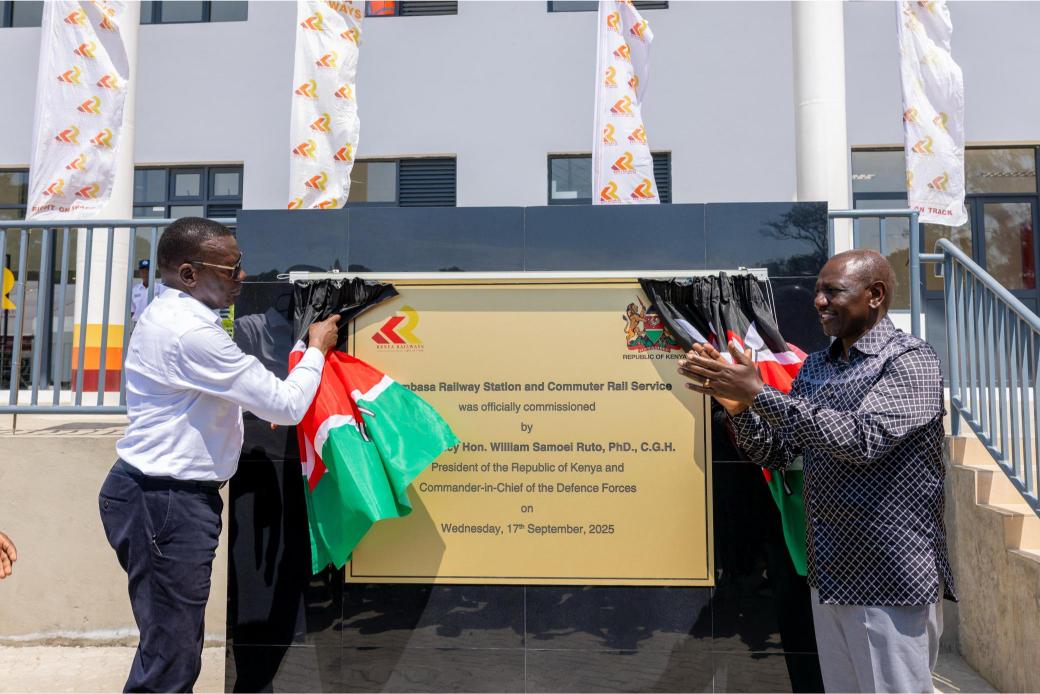President William Ruto has said the launch of the Mombasa Commuter Rail Service will transform daily transport for thousands of residents, traders, and tourists.
Speaking on Wednesday during the commissioning of the service in Mombasa, he noted that the new rail link between the Central Business District (CBD) and the Standard Gauge Railway (SGR) terminus at Miritini is a timely and vital solution to the city’s long-standing traffic challenges.
“For too long, passengers commuting between Mombasa town and Miritini have endured congestion, delays, and the burden of unreliable road traffic,” he said. “With this new service, journeys will be faster, safer, and more predictable.”
The commuter rail, which offers a round trip at just Sh50, will serve strategic stops at Miritini, Changamwe West, Changamwe East, Shimanzi, Mazeras, and Mombasa CBD, with a daily capacity of up to 4,000 passengers.
“This is about more than just improving how people move; it is about enhancing productivity, attracting investment, and making Mombasa a more liveable, accessible, and competitive city,” Ruto added.
 President William Ruto (R) alongside Transport Cabinet Secretary Davis Chirchir during the commissioning Mombasa Rail Service in Mombasa County on September 17, 2025. PHOTOS/PCS
President William Ruto (R) alongside Transport Cabinet Secretary Davis Chirchir during the commissioning Mombasa Rail Service in Mombasa County on September 17, 2025. PHOTOS/PCS
Rail Infrastructure Upgrades
The project involved rehabilitating 13.8 kilometres of the old metre-gauge railway and constructing a new 2.8-kilometre link to the SGR line, completing the first-and-last-mile connection for commuters.
The link enables passengers to travel from Mombasa town to Miritini and connect seamlessly to the Madaraka Express to Nairobi and beyond.
Kenya Railways Board chair Abdi Bare Duale said the service will halve travel time and drastically cut commuting costs.
“This commuter rail we are launching today will cut the travel time between the city of Mombasa to the Tamils by half, and it will also reduce the cost of traveling between the terminals to the city or from the city to the terminus, from 1000 by taxi, from 400 by matatu, to 50 shillings between the two stations,” he said.
Bare added that Kenya Railways moved 8.16 million people and carried over 8 million tonnes of cargo between Mombasa and Nairobi in the last financial year, highlighting the efficiency of modernised rail services.
Kenya Railways Managing Director Philip Mainga said commuter rail services have been rehabilitated across the country.
“We have rehabilitated all the other stations in Kenya; Nakuru to Kisumu (216.7 kms), Thika to Nanyuki (177kms), Kisumu to Butere (69 kms), Leseru to Kitale (64.9 kms), Gilgil to Nyahururu (76.8 kms), Nairobi Commuter Rail (165km). We requested our engineers to come up with designs that will bring back commuter services in Nairobi,” he said.
 President William Ruto, during the commissioning of the Mombasa Rail Service in Mombasa County on September 17, 2025 PHOTOS/PCS
President William Ruto, during the commissioning of the Mombasa Rail Service in Mombasa County on September 17, 2025 PHOTOS/PCS
Mombasa Governor Abdulswamad Nassir hailed the project’s benefits to the local economy.
“The people have patience, and that patience will only be paid by us being able to deliver. For those people, they will forget the pain that they went through during that time of being patient, but they will never forgive you for not being able to deliver. People need to move and transport their goods. Where one can shorten the time of transport and make it easier for transportation in terms of distance and cost, you have helped the economy,” he said.
Transport Cabinet Secretary Davis Chirchir reflected on Kenya’s broader transport strategy.
President Ruto also highlighted the historical significance of Kilometre Zero, where the Kenya-Uganda Railway—famously known as the “Lunatic Express”—began nearly 130 years ago.
“From this point, the railway carried the promise of development and integration into the interior. Today, Kilometre Zero once again makes history as the place where modern Kenya’s transport revolution begins anew,” he said.
The commuter rail is part of a larger government plan to expand the rail network from Naivasha to Malaba through Kisumu, and along the Lamu Port-South Sudan-Ethiopia Transport (LAPSSET) corridor, further integrating Kenya’s transport system and supporting economic growth.
“By serving vital routes, this service will decongest the city, enhance productivity, and make daily commuting easier for thousands of people. That is why today’s commissioning is a landmark occasion not just for Mombasa, but for the entire nation,” Ruto said.
The Mombasa Commuter Rail Service offers a reliable, modern, and affordable option for daily commuters and tourists alike.
It is expected to reduce road congestion, lower travel costs, enhance safety, and boost access to the Madaraka Express.
With these improvements, Mombasa is positioned to become more efficient, competitive, and connected, while preserving the historic legacy of Kenya’s railway system.
 A train that is part of the Mombasa Commuter Rail Service. PHOTO/MCG
A train that is part of the Mombasa Commuter Rail Service. PHOTO/MCG
